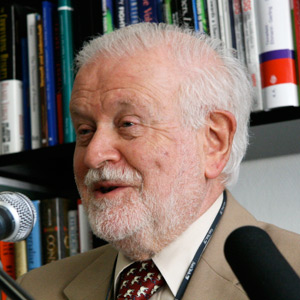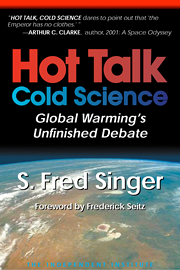In 1993, the EPA published a report claiming that secondhand smoke (SHS—also sometimes known as environmental tobacco smoke or ETS) causes three thousand deaths from lung cancer every year. Anyone doubting this result has been subject to attack and depicted as a toady of the tobacco lobby. The attacks have been led by a smear blog called DeSmogBlog, financed by the Canadian PR firm of James Hoggan, and have been taken up with great enthusiasm by self-styled “science historian” Professor Naomi Oreskes.
The tobacco smoking issue has also become a favorite tool for discrediting climate skeptics. A prime example is the book Merchants of Doubt by Oreskes and Eric Conway, which attacks several well-known senior physicists, including the late Dr. Fred Seitz, a former president of the U.S. National Academy of Sciences, the American Physical Society, and (most recently) Rockefeller University.
No matter what the environmental issue—ozone depletion, acid rain, pesticides, etc.—any and all scientific opposition based on objective facts is blamed on an imagined involvement with tobacco companies. None of this is true, of course. Oreskes and Conway claim to be academic historians, yet they have consistently ignored factual information, have not bothered to consult primary sources, have never interviewed any of the scientists they try to smear, and generally have operated in a completely unprofessional way.
Oreskes’ and Conway’s science is as poor as their historical expertise. To cite just one example, their book blames lung cancer from cigarette smoking on the radioactive oxygen-15 isotope. They cannot explain, of course, how O-15 gets into cigarettes, or how it is created. They seem to be unaware that its half-life is only 122 seconds. In other words, they have no clue about the science, and apparently, they assume that the burning of tobacco creates isotopes—a remarkable discovery worthy of alchemists. As an aside, when not engaged in smearing scientists by linking them to the tobacco lobby, Oreskes’ and Conway’s book claims that opposition to environmental regulation of greenhouse gases and other “pollutants” is based on anti-communism!
The ultimate aim of these attacks, at least in my case, has been to discredit my work and publications on global warming. I am a nonsmoker, find SHS to be an irritant and unpleasant, have certainly not been paid by Philip Morris and the tobacco lobby, and have never joined any of their front organizations. And I serve on the advisory board of an anti-smoking organization. My father, who was a heavy smoker, died of emphysema while relatively young. I personally believe that SHS, in addition to being objectionable, cannot possibly be healthy.
So what is the truth about SHS and lung cancer? I am neither an oncologist nor a chemical toxicologist, but I do know some statistics, which allows me to examine the EPA study without bias. I can demonstrate that the EPA fudged their analysis to reach a predetermined conclusion—using thoroughly dishonest procedures. EPA “scientists” made three major errors: 1) They ignored “publication bias.” 2) They arbitrarily shifted the statistical “confidence intervals.” 3) They drew unjustified conclusions from a risk ratio that was barely greater than 1.0.
- Since none of the epidemiological studies provided the clear answer they wanted, the EPA carried out a “meta-analysis,” lumping together a selected group of studies. Unfortunately, this approach ignores publication bias—i.e., the tendency for investigators not to publish their studies if they do not find a positive result.
- The EPA, in order to calculate a positive risk ratio, relaxed the confidence intervals from the generally accepted 95% standard to 90%—and admitted this openly.
- Even so, their “Risk Ratio” was just a little above 1.0—whereas careful epidemiologists, because of the presence of confounding factors, generally ignore any result unless the RR exceeds 2.0.
To sum up this somewhat technical discussion, while I cannot give specific answers about lung cancer or other medical issues connected with SHS, I can state with some assurance that the EPA analysis—to paraphrase my former teacher, Nobel physicist Wolfgang Pauli—is “not only wrong, but worthless.”
My assessments are independently confirmed by the Congressional Research Service (in report CRS-95-1115) and by a lengthy judicial analysis in 1998 by Judge William Osteen—all available on the internet. Science journalist Michael Fumento presented, in 1993, a well-researched and eminently readable account in Investors Business Daily.
In the largest (in terms of statistical power), most detailed (in terms of results presented), and most transparent (in terms of information about its conduct) epidemiologic paper on SHS and mortality ever published in a major medical journal (in the May 17, 2003 issue of the British Medical Journal), UCLA Prof. James Enstrom found no significant relationship between secondhand smoke and lung cancer. It is worth noting also that the World Health Organization, in a just-completed study reported in the British medical journal Lancet, gives a lung-cancer death rate (for US, Canada, and Cuba) of barely six hundred per year, only a fraction of the EPA number of U.S. deaths. An independent study, published in BioMed Central (2010) and supported by the Canadian National Cancer Institute and Canada’s Cancer Society, found no noticeable lung-cancer effect from SHS in nonsmokers; however, there was a significant effect from welding, use of paint thinners and solvents, and exposure to diesel exhaust, soot, and smoke from sources other than tobacco.
But just when we thought that nothing could top the EPA claims, along comes this bombshell from Obama’s surgeon general Regina Benjamin: “Even brief exposure to secondhand smoke can cause cardiovascular disease and could trigger acute cardiac events like heart attack.” Not just long-term exposure to SHS—just a whiff can kill you, asserts the surgeon general’s media release of Dec. 9, 2010. Of course, there is no evidence cited to back up this wild claim—just the usual and undisputed evidence about the health consequences to actual (primary) smokers.
So what does it all mean? The issue is not whether SHS is healthy; it obviously is not. One issue is the use of the “tobacco weapon” to attack the credibility of climate scientists—in place of using scientific arguments. It bespeaks of the desperation of those who don’t have any valid scientific arguments and wish to avoid public debate. (Imagine, if you will, Oreskes attacking the validity of the notorious “hockey stick” temperature curve by linking its author, Michael Mann, to tobacco company Philip Morris, instead of describing his faulty use of statistics.)
The other issue is the conduct of science and the integrity of the science process: the intrusion of government political agenda—worthy or not—on the way science is done and reported to the public. The corruption of science in a worthy cause is still corruption, and it has led to its further corruption in an unworthy cause—the ideologically driven claim of anthropogenic global warming.









